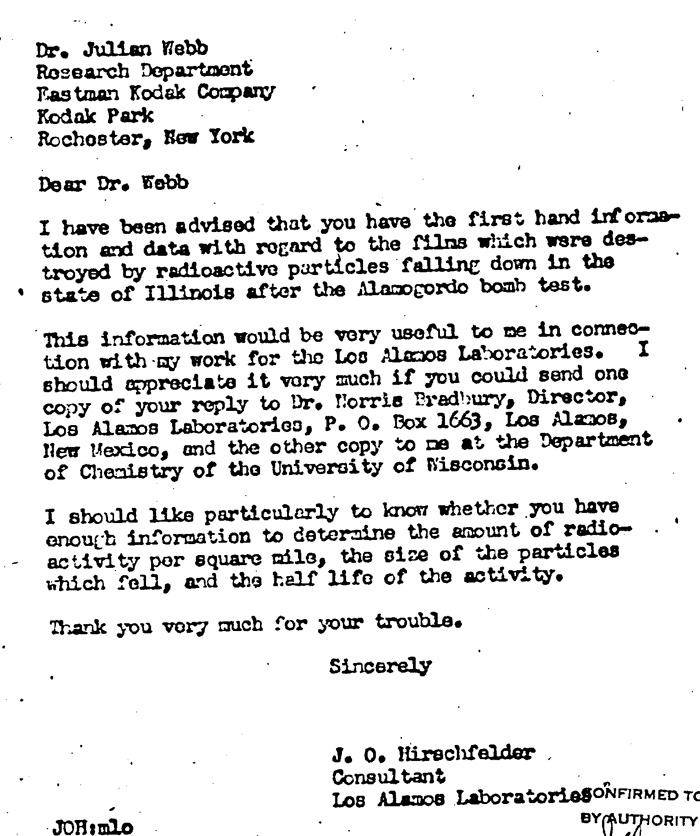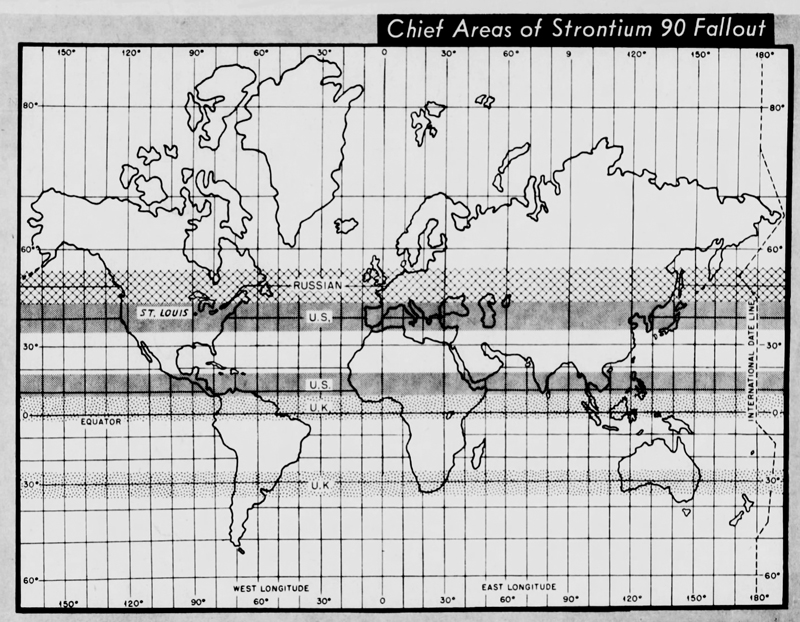The sixth day of August, 1945, the day an A-bomb was dropped on Hiroshima, Japan. Just three days later, another similar bomb was dropped on Nagasaki. What most people don’t know, is how it all started, and how the ever popular analogue photography company, Kodak, would be related to this scenario, and probably, could’ve prevented it from happening. It all started three weeks ago, on July 16, 1945 in Alamogordo, New Mexico.
Scene 1: The Trinity Test (1945)

The Trinity Test was observed by some of the greatest physicists of the 20th century. Enrico Fermi, Richard Feynman, Robert Oppenheimer and James Chadwick were a few in that long list of physicists. The test, conducted under the Manhattan Project, was one which would go on to change the world, forever.
Scene 2: Kodak
About 1900 miles from the Trinity Test site, the headquarters of Kodak were located in Rochester, New York. People working there, Kodak’s consumers started to flood their complaints regarding the ‘fogged up’ or ‘spotted’ X-ray films. Julian H. Webb, a physicist at Kodak was appointed to dig deeper into what caused this. This was though, not the first time Kodak experienced this. Back during the Second World War, a similar occurrence was observed, due to the alpha radiation caused by Radium, which was used extensively in the production of watches and other glow in dark instruments. To prevent this from happening again, Kodak limited its supply chain to only a very few factories and started to put a straw-board between the X-ray films. This method worked perfectly until a batch made on August 6, 1945 started to cause spots to appear on the film.

Webb, anticipating a similar cause, cut holes through the X-Ray films and observed their alpha radiation levels. These however, were not substantially more than the background levels. This ruled out Radium and other alpha particle radiating elements like Actinium, Uranium and Thorium. He then measured beta radiation levels coming off the films they however, were substantially higher then the background. This happened because beta particles were small enough to penetrate through the straw-board, unlike the much larger alpha particles. By measuring the half life of these particles (of about 30 days), Webb concluded that they would most likely be Cerium 141, an isotope which could only have come, through a nuclear fission explosion.
Scene 3: Fallout
def. The residual radioactive material propelled into the upper atmosphere following a nuclear blast. Below: A magazine cover from the cold war
Fission is a messy process, the radioactive nuclei do not necessarily split into the same product, instead hundreds of other nuclei are produced, mostly all of them, radioactive.
Just milliseconds after the blast, the radioactive mushroom cloud carried these atoms into the atmosphere with air currents, which ever way the wind blew. Unfortunately though, this time, it traveled over a thousand kilometres to end up in the towns of Iowa and Indiana. Here the rain captured these radioactive nuclei, causing them to Fallout. This water in turn landed up in the rivers adjoining the Kodak paper mills. Hence Ce141 ended up fogging up the X ray films, in turn exposing the well kept secret of the nuclear bomb tests by the US.
Although Webb concluded his findings in 1945, he only published his paper about it in 1949, for he himself had worked on the Manhattan project, and understood how important this was.
Scene 4: The Bitter Aftertaste
Kodak sued the US Government. They did so because of the “…considerable amount of damage to our products resulting from the Nevada tests or from any other further atomic energy tests…”
Now instead of following up with the suit, both sides came to an agreement, that the government will inform Kodak prior to the tests, about the location and nature of the bombs and Kodak will in turn keep quiet about these tests. The US government, between 1951 and 1963, conducted over a hundred nuclear tests on their Nevada test site.
This caused more fallouts to occur. The cattle ate these radioactive nuclei alongside the grass. These atoms ended up inside the crops and hence the food supply. Iodine 131 was passed on from cows to humans via their milk. This was particularly harmful since out thyroid glands concentrate the iodine content in our body. when this contaminated cow’s milk was fed to new borns, growing children, it lead to tens of thousands of thyroid cancer cases in the USA. Still, could be worse?
I131 has a half life of just 8 days, the government was though more worried about Strontium 90. Strontium behaves biochemically like Calcium. When ingested in the body, it is assimilated into the bones, leading to bone cancer, cancer of tissues and even leukemia.


The baby tooth survey concluding the relationship between cancer rates and average strontium uptake between 1954 and 1970. (Graph shows a peak in 1964 just after the partial nuclear test ban treaty signed in 1963.)
Scene 5: The aftermath
Senator Tom Harkin in his hearing about this matter in 1997 said,
”It really is odd that the Government would warn Kodak about its film but it wouldn’t warn the general public about the milk it was drinking. Where I ask were the maps for dairy farmers? Where were the warnings to parents of children in these areas?”
The year 1945, hence marked the beginning to a whole series of radioactive fallouts. None before it, loads after it. The traces of these radioactive nuclei still present in things dating 1964 can still be used to detect wine forgeries, art forgeries and infact determining the age of a skeleton. This method is so precise it can also be used to measure the exact year the thing is dating to, hence it has been used in dozens of forensic cases, to determine the age of the body or when it was killed.
The end: What the world can learn?
The US government thought, that photographic films were more sensitive to this radiation, than the public. Traces of which are still found in everyone of us. many people died due to cancer caused by it. It in the end, caused irreparable damage to the world and its citizens. The biology of these nuclear bomb tests, was never considered, until it was too late. These days, the nuclear tests can only be conducted underground to prevent such fallouts.
The world will soon depend on nuclear energy for all its needs, primarily, electricity. It though is a very efficient and mostly safe process when done right, the governments of this world must ensure proper safety standards are ensured. The reactor explosion in Chernobyl will continue to haunt the world until the year 22000.
The governments should always keep its citizens first, afterall, lives do matter more than photographic films.


Leave a comment